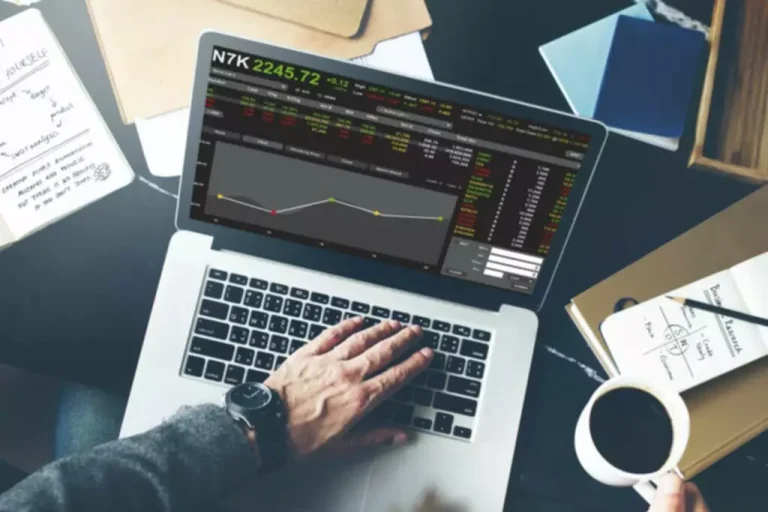Different types of cryptocurrency use coin burning in different ways, and it’s important to understand the approach of any crypto in which you’re considering investing. Traders can exchange crypto by sending it to and from a crypto wallet, using their private keys. To execute a coin burn, users send their crypto to an “eater address,” or a burn wallet, which is a crypto wallet that only receives tokens, but can’t send them. Thus those coins are effectively locked up, and taken out of circulation. While the buyback-and-burn mechanism couples these two processes, projects can conduct buybacks without burning the acquired tokens.
- Bitcoin, for example, uses a proof-of-work protocol that incentivizes miners, or validators, to verify transactions with a sum of tokens known as block rewards.
- Their Auto-Burn formula determines the number of tokens for elimination.
- One of the most effective ways to combat the side effects is through token burn.
- This algorithm allows miners to burn coins without wasting energy efficiently.
- After erasing tokens from existence, there are two ways to proceed.
- The MTC resource center aims to bridge the gap by featuring easy-to-understand guides that build up and break down the crypto ecosystem for many.
- Burning crypto shouldn’t be taken literally—there’s no physical burning involved.
Burning crypto has also developed as a low-energy way for blockchain projects to increase their security and stability. When a project removes superfluous tokens from circulation, it reduces the risk of malicious actors having too much control over the market, Machikhin said. A crypto burn is the process of sending cryptocurrency tokens to a wallet that is inaccessible by anyone and is lost forever.
Reasons for Coin Burn
This category of mechanism is usually implemented as an economic policy or program undertaken by the project. It is not integrated into the protocol layer or code base of the project. Finally, some miners may wish to burn their crypto to utilize proof-of-burn, as previously mentioned, to gain cheaper mining and creation of blocks. Binance completed its 21st BNB burn in October 2022, which includes the auto-burn feature, pioneer burn program, and a portion of gas fees burned in every transaction. Now let’s take a look at an example of a coin burn, where we burn an NFT (ERC-721 token) on Etherscan.
That is why it is not recommendable to burn your own tokens, as the coins remain irretrievable, and you end up throwing money in the air. Through burning, investors get to influence the price stability of the token, which means more investors tend to finance projects that are involved in token burning. Increased liquidity and HODLing perks are just some of the most relevant features that shareholders value in the long run. The Serum team aims to maintain low token circulation to increase SRM’s scarcity through continuous coin burns, which boost prices in the long run. This is a technical process, but it essentially entails telling the smart contract the number of coins they want to burn. The smart contract will then verify that they have enough coins in their wallets and subsequently executes the burn.
Wallet Connect
The motivation is often to increase the value of the remaining tokens since assets tend to rise in price whenever the circulating supply falls and they become more scarce. As the crypto industry matures, strategies like buyback-and-burn emerge as formidable tools in a project’s arsenal. Let’s dive into the multifaceted rationale, highlighting its deep-rooted economic logic and strategic significance in the digital currency.
This smart contract automatically sends a specific number of circulating tokens to the burn address. Binance aims to eventually eliminate 50% of its volume with this strategy. One of the few differences between PoB and PoS is that PoS involves holders staking their tokens held on the blockchain to have the chance to mine coins. There’s also the proof-of-work (PoW) method, where blockchains have to rely on heavy computing power that consumes massive amounts of energy. With the possibility for users to earn crypto and have the value of it increase, burning crypto helps keep liquidity flowing for the long term.
What Does Burning Crypto Mean: Cryptocurrency Burning Definition and Importance
But, investors can also participate in this global movement for financial freedom. Staking, yield farming, or HODLling have already made millionaires. Trading is all about finding your own unique approach to this fast-paced market. Sometimes it is only about economic implications and creating hype.

Burning crypto refers to a deflationary process that permanently removes cryptocurrency tokens from circulation. This is done to decrease the total supply of a digital asset as an attempt to boost demand and increase market value. Burning crypto is a common practice, exercised by cryptocurrency platforms, that permanently removes tokens from circulation. By reducing the total supply of a coin, the hope is that the value of a specified digital asset will increase with market demand.
Connect to your favourite CryptoWallet
For example, the central banks of different countries regulate the amount of currency in circulation to control the purchasing power of that currency. There are several other practical reasons for cryptocurrency burning. Burning a cryptocurrency means permanently removing a certain number of tokens from circulation. It’s usually done by transferring the tokens in question to a burn address, i.e., a wallet, from which they may never be retrieved. As the name suggests, Coin Burn is a process of intentionally burning or eliminating the coins rendering them to be unusable.

The scarcity of the token rises and triggers a price appreciation of the remaining tokens in circulation. As you’ve probably guessed, crypto burning isn’t carried out for the sake of it. Some cryptos are highly valuable, so burning them may seem entirely pointless to some. While any coin can be burned, it’s not necessarily something everyone would want to do. Most individuals wish to either keep, sell, or stake their crypto, not remove it from circulation entirely.
Why Are Coins Burnt?
Cryptocurrency tokens are notorious for their volatile price swings. The price of Shiba Inu plummeted after Buterin’s transfer to the India COVID-Crypto Relief Fund last Wednesday. This, some may argue, is a better way for cryptocurrency to work, due to its lack of environmental impact and minimum cost to the miners. As the token value and market perception improve, crypto burn meaning other projects or organizations may take notice, opening doors for growth and expansion through collaboration or integration. Protocols that use proof of burn include Ripple, BitShares, Slimcoin, Counterparty and Factom. “This acts as an incentive to keep the network secure, as miners are rewarded with new coins for destroying their old ones.” Machikhin said.